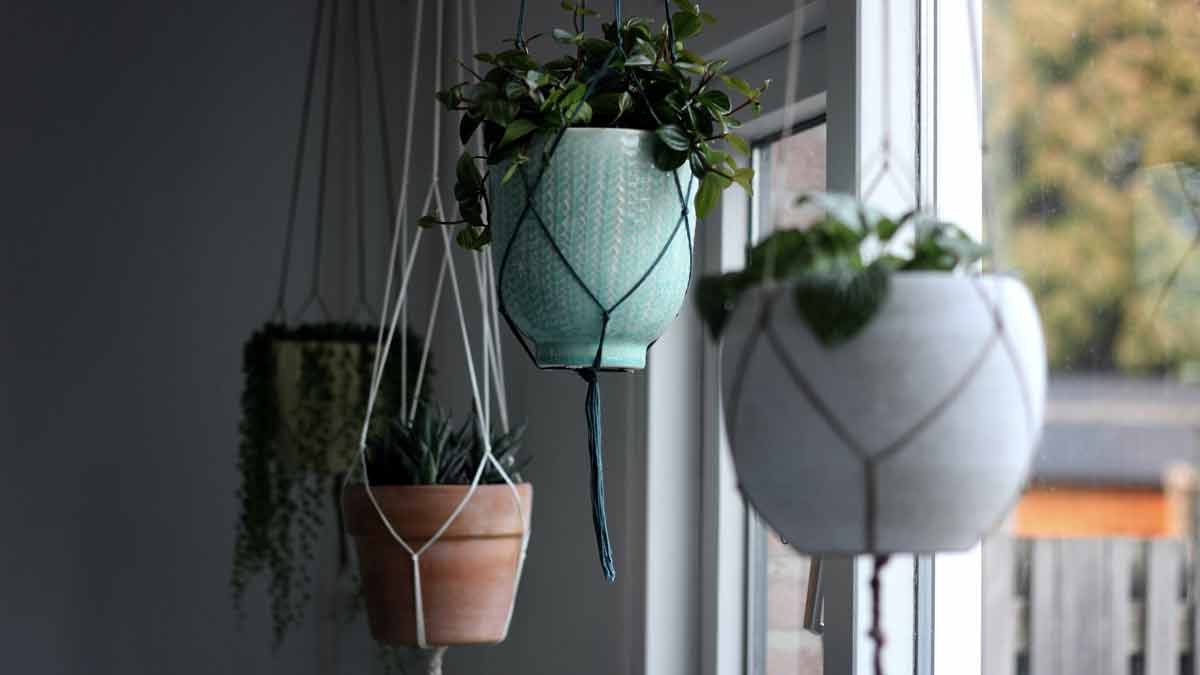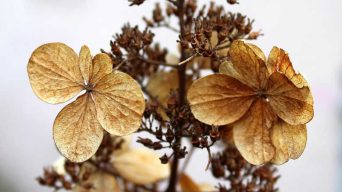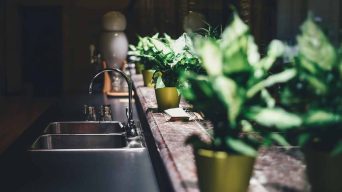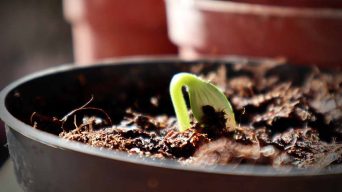To water indoor hanging plants without dripping, try bottom watering or using a watering can with a narrow spout, a turkey baster, or self-watering planters. Choose plants that prefer to be slightly dry and have thicker leaves or stems to avoid excessive dripping.
Indoor hanging plants are an excellent way to add greenery and charm to your living space.
However, watering these beauties can be tricky, especially when trying to avoid dripping water all over the floor or furniture.
In this guide, we will discuss how to effortlessly water indoor hanging plants without making a mess, along with valuable tips for maintaining healthy plants in your home.
Keep reading for easy-to-follow techniques that make caring for your verdant oasis a breeze!
Techniques For Watering Indoor Hanging Plants Without Dripping
Here you’ll discover practical ways to water your indoor hanging plants without making a mess.
You’ll explore techniques like bottom watering, using specialized watering cans, turkey basters, and self-watering planters to keep your plants hydrated and healthy.
1. Bottom Watering
Bottom watering is a simple technique that can help prevent dripping when watering hanging plants indoors.
To bottom water, follow these steps:
- Fill a shallow container or sink with three inches of water.
- Place the pot on top of the water, making sure the bottom holes are submerged.
- Allow the plant to sit in the water for 30-45 minutes or until the soil is moist.
- Remove the pot from the water and allow any excess moisture to drain from the bottom holes.
Bottom watering ensures that only the amount of water the plant needs is absorbed, preventing overwatering and minimizing dripping.
This method is especially useful for plants with sensitive foliage that may be damaged by excessive leaf moisture.
2. Watering With a Can With A Narrow Spout
When watering indoor hanging plants without dripping, using a watering can with a narrow spout can be very helpful.
This technique allows for more precise watering and reduces the risk of water splashing or overflowing onto the floor.
Here are some tips for using a watering can with a narrow spout for your indoor hanging plants:
- Fill the watering can with water and carefully aim the spout towards the soil surface of the plant.
- Pour slowly and steadily, allowing the water to absorb into the soil before adding more.
- Be careful not to pour too quickly or forcefully, as this can cause excess water to spill out of the hanging pot.
- If you find it difficult to reach high hanging plants with a traditional watering can, you can use an extended neck watering can that allows for better reaching capabilities.
3. Using A Turkey Baster
A turkey baster is another tool that can be used to water indoor hanging plants without dripping.
Here are the steps to follow:
- Fill the turkey baster with water.
- Gently insert the tip of the baster into the soil of the plant.
- Squeeze the bulb end of the baster, slowly releasing a small amount of water into the soil.
- Repeat until all soil areas have been watered to your desired level.
- Be careful not to administer too much water at once or too quickly, as this can cause dripping or overflowing.
A turkey baster allows precise watering and avoids dribbling water on floors or furniture.
Using a turkey baster may take longer than other watering methods. Still, it allows for more control and precision when watering plants.
4. Using Self-Watering Planters
Self-watering planters are a great way to water indoor hanging plants without dripping.
These self-watering containers utilize a reservoir at the bottom to provide water to the potted plants as needed, allowing for a more consistent and controlled watering method.
Here are some benefits and tips when using self-watering planters:
- Easy to use: Self-watering planters simplify the watering process, making it easier for those who may not have a green thumb.
- Consistent moisture: The reservoir ensures that the plants receive consistent moisture levels, helping to prevent over or underwatering.
- Less frequent watering: With self-watering planters, you can water your indoor hanging plant less frequently since water is already stored in the reservoir.
- Choose the right planter: When selecting a self-watering planter, choose one appropriate for your plants’ size and moisture requirements.
- Check the water level: Make sure to check the water level in the reservoir regularly and refill it as needed.
- Use a drip tray or cache pot: While self-watering planters help reduce dripping from overwatering, placing them on a drip tray or within a cache pot to protect against spills or leaks.
- Suitable for most types of plants: Self-watering planters work well with most indoor hanging plants, including succulents and those that prefer a slightly drier soil.
Using self-watering planters allows you to enjoy healthy and thriving indoor hanging plants while minimizing any potential dripping or mess during watering sessions.
Tips For Maintaining Healthy Indoor Hanging Plants
Maintaining healthy indoor hanging plants requires some essential practices.
You can ensure their optimal growth and longevity by checking soil moisture, selecting the appropriate pot and soil, providing adequate light and ventilation, adjusting watering frequency, and repotting as needed.
1. Choosing The Right Pot And Soil
Choosing the right hanging pot and soil is crucial in keeping your indoor hanging plants healthy.
When it comes to pots, make sure to choose those with drainage holes at the bottom to prevent water from sitting in the pot, which can lead to root rot.
Decorative cache pots without drainage can still be used by placing a plastic liner with holes inside.
In terms of soil, use a well-draining potting mix that suits your specific plant’s needs.
Succulent plants like cacti or snake plants prefer sandy soils. In contrast, tropical plants like philodendrons prefer moist and peat-rich soils.
Remember not to overfill the pot with potting soil; leave some space at the top for watering.
Making sure you have chosen the right pot and soil will help keep your indoor hanging plants healthy and avoid common problems such as overwatering or underwatering, which can affect their growth and appearance.
2. Checking Moisture Levels Regularly
Checking moisture levels regularly is crucial to keep your indoor hanging plants healthy.
Different plant species have different watering needs, and it’s essential to know how much water each of them requires.
One way to check the soil’s moisture level is by sticking your finger one inch into the soil, and if it feels dry, it’s time to water.
Another method to check for moisture levels is using a moisture meter, which accurately records the soil’s wetness.
This tool can help determine when it’s time to water plants without over or underwatering them.
Overwatering can lead to root rot, while underwatering can cause leaves to wilt and fall off.
It is important to monitor not only the frequency but also the amount of watering.
It’s vital not only for the health of your plants but also for preventing dripping from reaching floors below when hanging pots are used—plants with built-in water storage mechanisms that need less frequent watering than others.
For example, succulent types store more water in their leaves, requiring less frequent watering than ferns and palms.
3. Repotting When Necessary
Repotting is essential to indoor plant care, especially for hanging plants.
As plants grow, their roots outgrow the pot and need more space to absorb water and nutrients.
When you notice that your potted plant has become root-bound or the soil dries out too quickly after watering, it’s time to repot.
Select a new pot one size larger than the current one, preferably with additional drainage holes in the bottom.
Use a fresh soil mix that contains peat moss and perlite.
Gently remove the plant from its old pot without damaging the root system. Untangle any entwined roots using your fingers or scissors if necessary.
Carefully place your plant into its new home by filling about 1/3 of the pot with soil, then adding enough soil around your plant so it stays upright but don’t press down too hard on it.
Once placed in a new container, adjust the watering frequency based on what works best for each specific type of indoor hanging plant species, as this will help maintain optimal health.
Repotting can be intimidating at first, but doing it correctly ensures healthy growth while preventing dripping issues when watering due to overgrown roots blocking drainage holes.
4. Providing Enough Light And Proper Ventilation
It’s not just about watering your indoor hanging plants without dripping; providing enough light and proper ventilation is also essential for their overall health.
When choosing a spot to hang your plants, ensure it gets the right amount of sunlight or shade depending on the plant’s needs.
Some plants may require indirect light or shaded areas, while others need more direct sunlight.
Proper ventilation is also crucial in maintaining healthy indoor hanging plants as it helps prevent fungal growth and ensures the leaves can breathe properly.
If your plants look wilted or yellowing despite sufficient watering, it may be due to a lack of airflow.
Keep them away from drafts but make sure they have some exposure to circulating air.
Remember that different indoor hanging plants have varying requirements for light and ventilation, so always check what works best for each specific species you’re growing up high!
5. Adjusting Watering Frequency Based On Plant Needs
It is essential to adjust the frequency of watering indoor hanging plants based on their specific needs.
Some plants, such as succulents, prefer to be slightly dry between waterings, while others may require more frequent watering.
To determine how often your plant needs water, regularly check its soil moisture using a moisture meter or stick your finger an inch deep into the soil.
Factors such as temperature, humidity levels, and seasonal changes can also affect a plant’s need for water.
During warmer months, when indoor temperatures are higher, and there is more sunlight exposure, plants may require more frequent watering.
In contrast, plants may not need as much water during cooler months with less sunlight exposure and lower indoor temperatures.
Adjusting watering frequency based on plant needs and environmental variables will help prevent overwatering, which can lead to root rot and damage the health of your indoor hanging plants.
Choosing The Right Plants For Hanging
When it comes to hanging plants, selecting the right type of plant can make all the difference.
Opt for succulents or plants with thicker leaves and built-in water storage to simplify hanging and watering.
Plants That Prefer To Be Slightly Dry
Indoor hanging plants that prefer to be slightly dry are an excellent choice for those who want low-maintenance plants.
These plants can thrive even if not watered as frequently as other indoor plants.
Here are some examples of indoor hanging plants that prefer to be slightly dry:
- String of Pearls (Senecio Rowleyanus): This plant has bead-like leaves resembling small pearls and needs only occasional watering.
- Spider Plant (Chlorophytthouum Comosum): This plant is hardy, easy to care for, and prefers its soil to dry out between watering.
- Cactus (Cactaceae family): These plants exhibit a variety of shapes and sizes, but all cacti prefer their soil to be completely dry before watering.
- Burro’s Tail (Sedum Morganianum): This plant has long, cascading stems covered in small round leaves and doesn’t require frequent watering.
- ZZ Plant (Zamioculcas zamiifolia): It’s a low light-tolerant plant that likes its soil to dry out entirely before the next watering.
It’s important to note that even these plants need regular care, including checking the soil moisture level regularly, providing enough light and proper ventilation, and adjusting the watering frequency based on their specific needs.
Plants With Thicker Leaves Or Stems
Plants with thicker leaves or stems are better at retaining water, making them more forgiving if you accidentally overwater or drip water on them while watering.
Here are some examples of indoor hanging plants with thick leaves or stems:
- Cactus (Cactaceae family): These plants exhibit a variety of shapes and sizes, but all cacti prefer their soil to be completely dry before watering.
- Snake Plant: A low-maintenance plant that can thrive in low light and dry conditions.
- Jade Plant: A popular succulent with thick, fleshy leaves that retain water well, making it drought-tolerant.
- Pothos: A classic indoor hanging plant known for its trailing vines and thick waxy leaves that hold moisture well.
Remember, even plants with thicker leaves or stems should not be overwatered.
Always check the soil moisture level before watering and adjust your watering frequency based on each plant’s needs.
Final Thoughts
Watering indoor hanging plants without dripping can be challenging. Still, several techniques and tips help keep your plants healthy and your floors dry.
Bottom watering, using a narrow spout watering can or a turkey baster, self-watering planters, and choosing the right plants for hanging are all effective ways to prevent dripping.
Maintaining healthy indoor hanging plants involves:
- Regular checking of moisture levels.
- Providing enough light and ventilation.
- Adjusting watering frequency based on plant needs.
- Repotting when necessary.
Remember to choose containers with bottom holes to provide proper drainage and use drip trays or cache pots to capture any excess water.
By following these tips and tricks, you’ll have gorgeous hanging greenery that will thrive in any room of your home!







